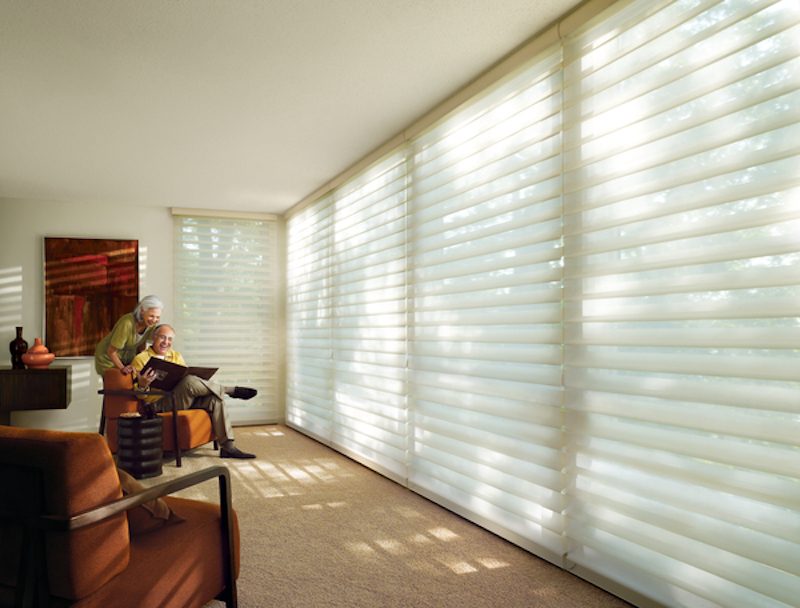Creating an energy-efficient home is essential, both for reducing your carbon footprint and saving money on utility bills. While traditional methods like insulation and sealing windows are effective, there’s another element that often gets overlooked: curtains and blinds. These versatile window coverings can play a significant role in enhancing energy efficiency in your home. By using curtains and blinds strategically, you can regulate heat gain or loss, reduce the usage of artificial lighting, enhance privacy, and add an aesthetic touch to your living space.
1. Durable Selections:
When it comes to choosing curtains and blinds in Melbourne for energy efficiency, opt for durable fabrics that offer both thermal insulation and longevity. Fabrics like natural linen or dense fabric weaves provide better insulation by trapping air between the windowpane and living space, acting as a barrier against outside temperatures. Heavy-duty materials or triple-weave fabrics are particularly effective in minimising heat transfer during hot summers or chilly winters.
2. Layer It Up:
Layering curtains with different thicknesses can amplify their insulation properties further. Start by hanging sheer curtains close to the windows to allow natural light into the room while maintaining privacy. Layer heavier curtains over them to create an additional level of insulation for optimum energy efficiency in both summer and winter months. This layering technique helps retain heat in colder seasons while blocking out excessive sunlight during warmer months.
3. Reflective Blinds:
Blinds, especially those with reflective surfaces or coatings, can significantly reduce heat gain from direct sunlight during scorching summer days. These reflective surfaces bounce off sunlight before it enters the room, thereby preventing heat buildup inside your home. Additionally, blinds offer flexibility by allowing you to control sunlight entry while preserving outside views, ensuring optimal lighting conditions throughout the day without relying heavily on artificial lights.
4. Insulating Features:
Investing in blinds with insulating features is another smart move towards energy efficiency. Honeycomb or cellular blinds are engineered with a cellular structure that traps air, providing an efficient barrier against temperature transfer. The trapped air in these honeycomb pockets acts as an insulator and aids in minimising heat gain or loss. These blinds offer insulation levels equivalent to double glazing, making them a wise choice for maximising energy efficiency without sacrificing style.
5. Proper Installation:
Proper installation plays a crucial role in maximising energy efficiency with curtains and blinds. Ensure gaps between the window frame and the curtain rod are minimal to prevent air drafts from entering or escaping the room. For effective blind installation, mount them as close to the window as possible, ensuring they cover the entire glass area completely when closed, leaving no room for unwanted light leaks. A professional installation service can assist in achieving a proper fit and maximise the benefits of your window coverings.
6. Ready-made vs Customization:
While ready-made curtains and blinds are widely available off-the-shelf, consider customisation options to maximise their energy-saving potential for your home’s unique layout and window dimensions. Tailored curtains allow you to achieve a perfect fit, ensuring there are no gaps or loose edges that compromise insulation effectiveness. Customised blinds can also be made to align precisely with your specific requirements and provide optimal insulation where you need it most.
7. Quality Hardware:
Don’t forget about the hardware! Choosing quality rods, tracks, pelmets, and brackets ensures stability and enables precise control over your curtains and blinds while enhancing their durability. Investing in durable hardware not only guarantees smooth operation but also reassures you that your energy-efficient window coverings will perform effectively for an extended period.
Conclusion:
Windows have a significant impact on energy efficiency within our homes by contributing to heat gain/loss, natural lighting conditions, and overall comfort levels. Curtains and blinds present an opportunity to harness this power through their strategic selection and proper installation techniques outlined above. By choosing durable materials, layering curtains effectively, using reflective blinds, opting for blinds with insulating features, and ensuring proper installation with quality hardware, you can create an energy-efficient living environment that is comfortable, stylish, and environmentally conscious.

